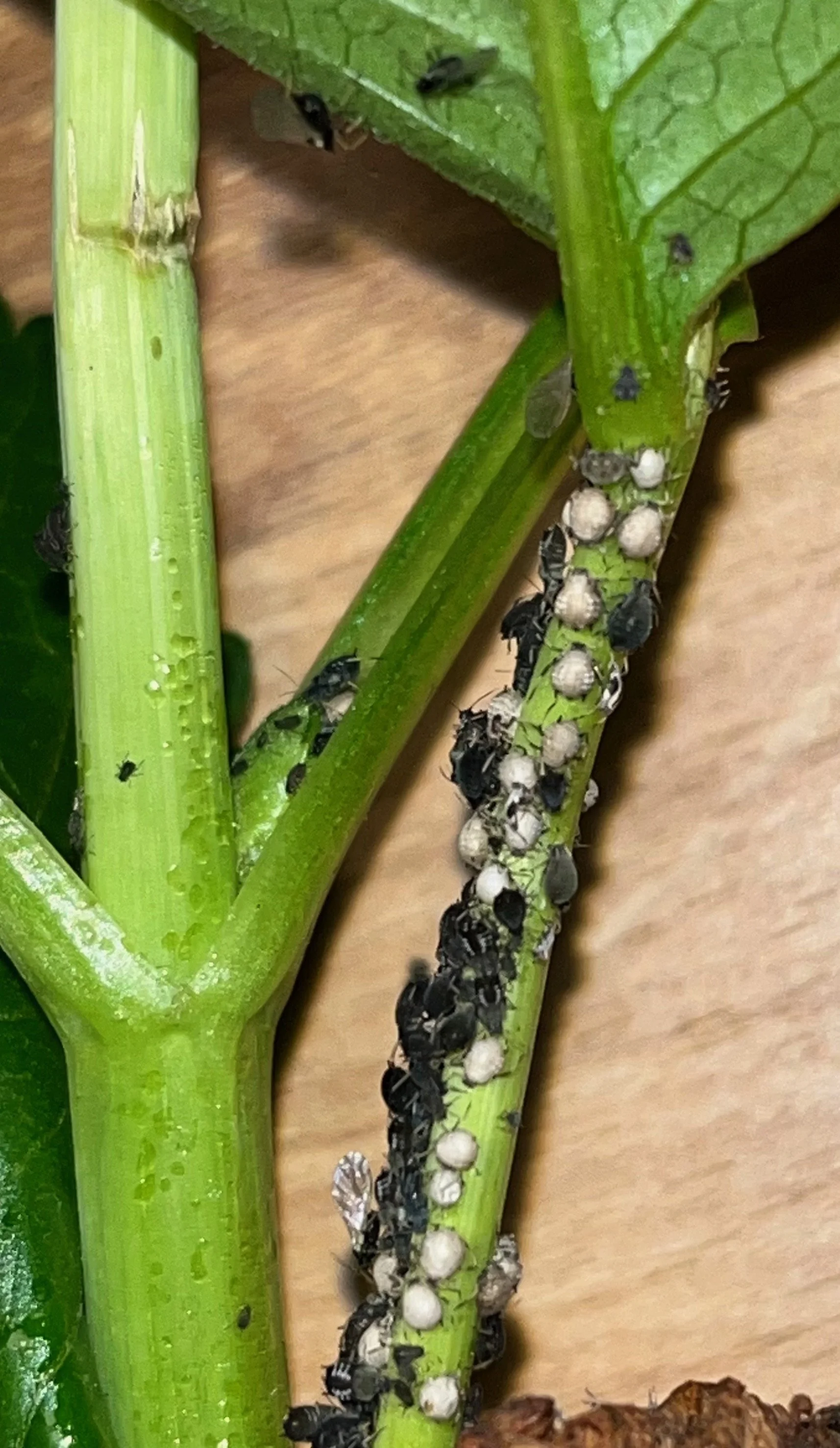
How to protect your dahlias from new viral infections
How to protect your dahlias from new virus infections
The primary route of virus transmission in dahlias is by the insects (aphids and thrips).
Aphids spread the dahlia mosaic
viruses between plants with their piercing-sucking mouth parts. So, if you have aphids in your garden, virus can easily move from an infected plant to an uninfected one if they are planted together. Therefore, it is best to plant your virus free dahlias away from untested or infected plants. Also, it is believed that contaminated pruning shears can spread infected sap between plants and the American Dahlia Society recommends that you should always disinfect your tools between working on different plants. You can help control aphids by the use of non-toxic insecticidal soap and predatory beneficial insects, such as lady bugs and lacewings.
Aphids feeding on a dahlia stem.
Thrips are the vectors for Tobacco streak virus (TSV) and Tomato spotted wilt virus (TSWV).
These insects are virtually microscopic and can easily be missed without a magnifying lens. The mode of viral transmission for these viruses is more complex than the aphid and DMV. TSV is spread by infected pollen being deposited (or drilled) into plant tissues by thrips during their feeding and egg laying activity (not yet proven in dahlias). TSWV cannot be transmitted by virus-free adult thrips. For transmission to occur it requires that the thrips’ larvae feed on an infected plant, which allows the virus to colonize their mid-gut. The thrips’ larvae then enter a pupal stage in the soil, and when they emerge, they can transmit TSWV in their saliva for the remainder of their life.
Unlike the dahlia mosaic viruses that have a limited host range (primarily infecting the Sunflower family), hundreds of different plants can act as hosts for TSV and TWSV. So, in order to protect your TSV/TSWV negative dahlias, you need to grow them away from infected dahlias AND away from potential virus host plants. Important weed groups to avoid are the following plant Orders: Asterales (thistle, ragweed), Solanales (nightshade, bind weed), Fabales (clovers, beans) and Caryophyllales (lambsquarter, pigweed).
Yellow sticky traps
are good to use both to monitor for the presence of aphids and thrips, but can also help control their numbers. Predatory insects such as lacewings, lady bugs, and minute pirate bugs can keep adult thrips populations at low levels while beneficial soil nematodes and predatory mites eat pupating and larval thrips.
Resource: Beneficial Insects



